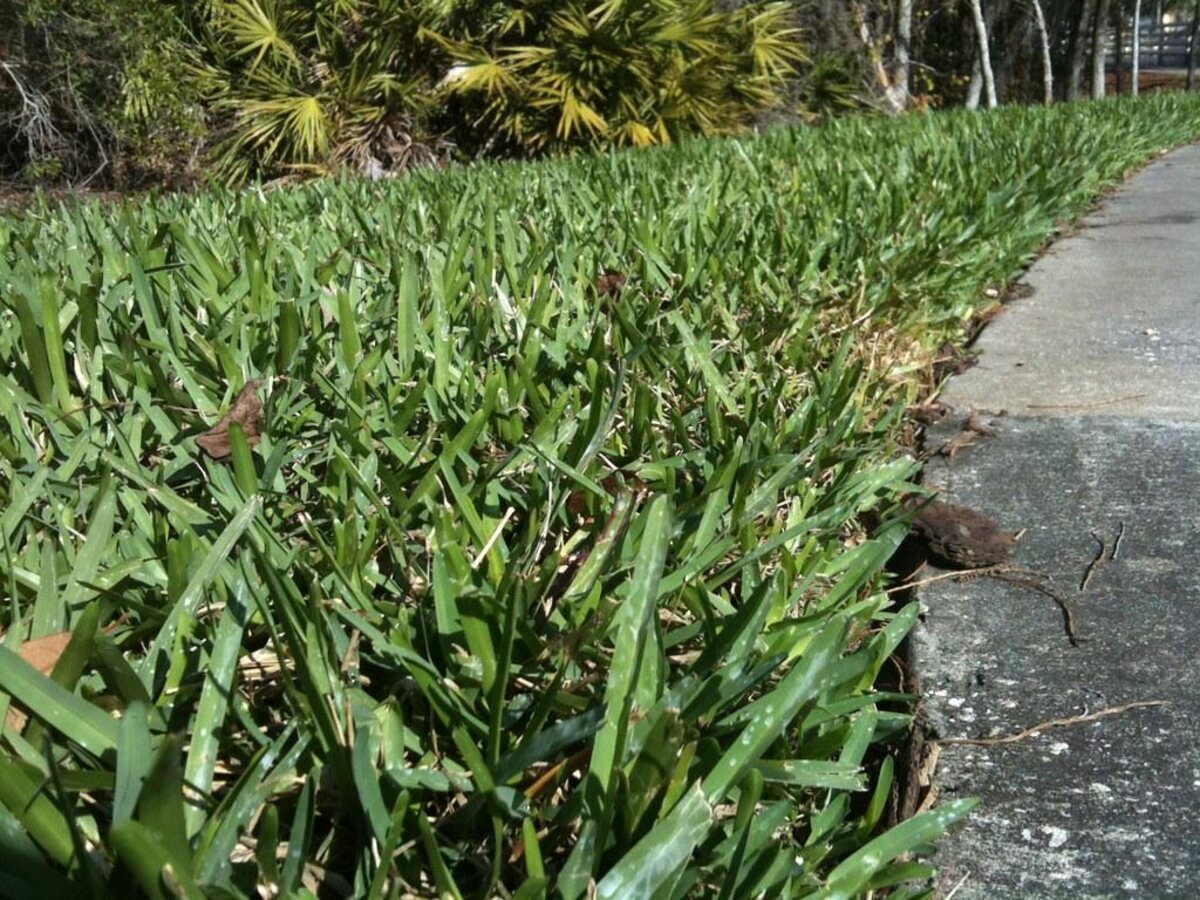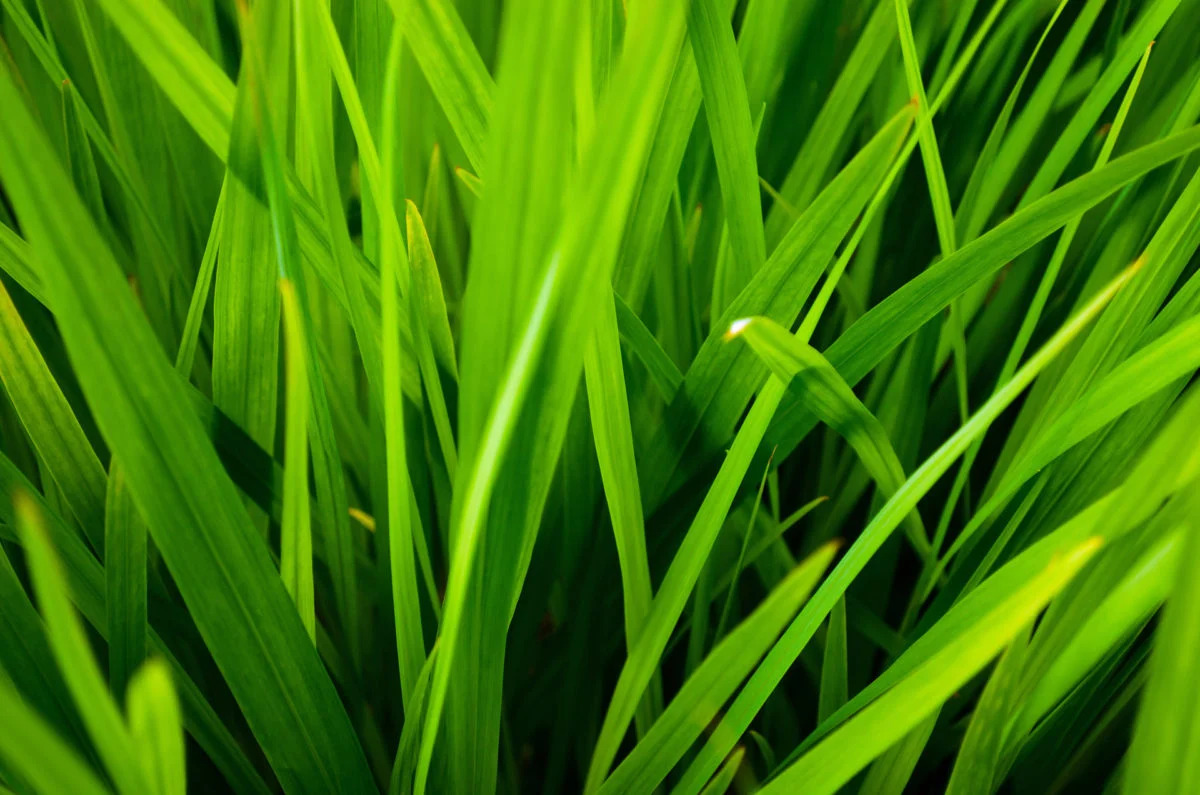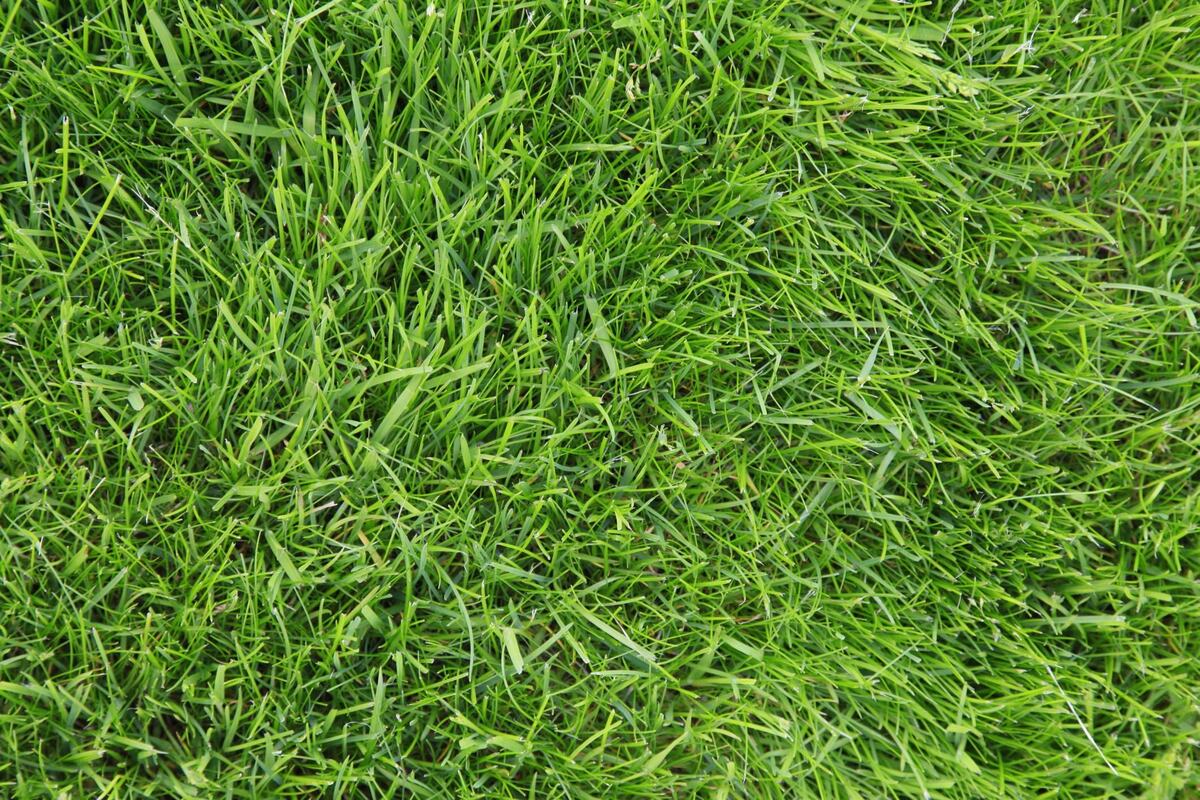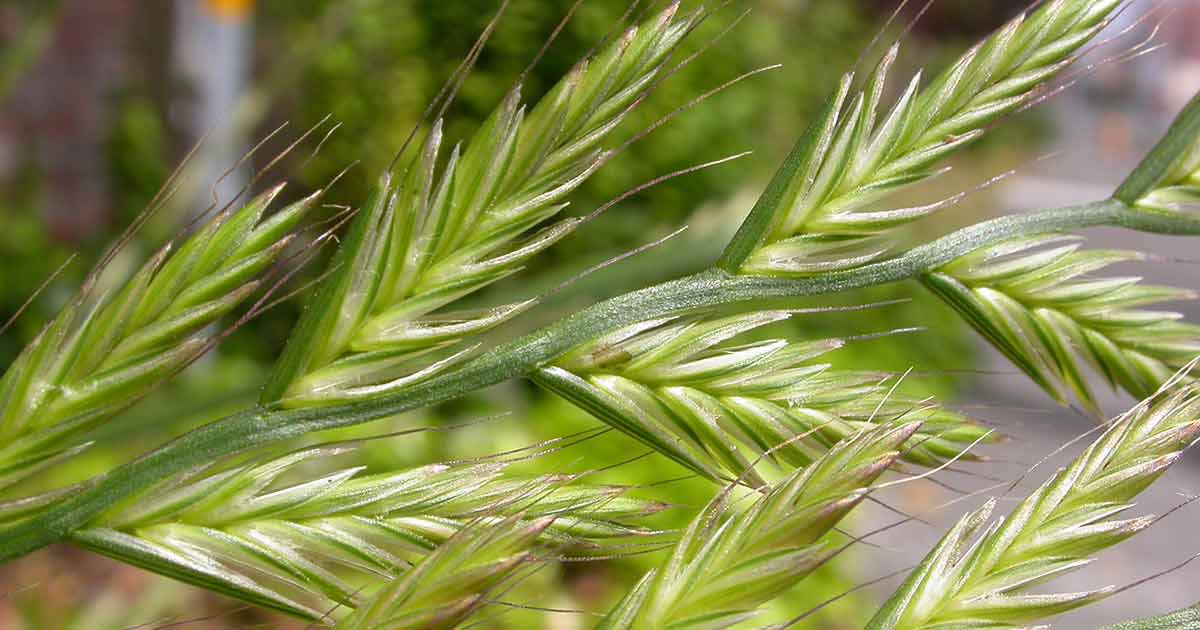Home>Gardening & Outdoor>Landscaping Ideas>How To Find Out What Type Of Grass You Have


Landscaping Ideas
How To Find Out What Type Of Grass You Have
Modified: March 27, 2024
Learn how to identify the type of grass in your lawn with our landscaping ideas. Discover the best methods for determining the grass variety in your yard.
(Many of the links in this article redirect to a specific reviewed product. Your purchase of these products through affiliate links helps to generate commission for Storables.com, at no extra cost. Learn more)
Introduction
Identifying the type of grass in your lawn is a crucial step in maintaining its health and beauty. Different grass species have varying requirements for water, sunlight, and nutrients, so understanding the specific type of grass you have will enable you to provide the best care for it. Whether you're a new homeowner or a seasoned gardener, determining the type of grass in your yard can be a rewarding and enlightening process.
Understanding the unique characteristics of your grass can also help you address any issues it may be facing, such as discoloration, thinning, or susceptibility to pests. By accurately identifying your grass, you can tailor your lawn care practices to promote its growth and resilience.
In this comprehensive guide, we will explore various methods for identifying the type of grass in your lawn. From visual inspection to seeking professional assistance, we will cover the steps you can take to uncover the specific species of grass that graces your outdoor space. Additionally, we will delve into the importance of considering your local climate and region, as well as conducting a soil test to further refine your understanding of your grass type.
By the end of this guide, you will be equipped with the knowledge and tools necessary to confidently determine the type of grass in your lawn, empowering you to provide optimal care for your green oasis. Let's embark on this enlightening journey to uncover the secrets of your grass and unlock the potential for a vibrant and thriving lawn.
Key Takeaways:
- To identify your grass, start by closely observing its color, texture, and growth pattern. Use a grass identification guide and seek professional help for accurate identification. Consider your region’s climate and conduct a soil test for comprehensive insights.
- Identifying your grass type is like solving a fun mystery! Look closely, use guides, and get expert help. Consider your region’s climate and do a soil test for the best care.
Read more: How To Find Out What Kind Of Grass You Have
Step 1: Examine the grass
The first step in identifying the type of grass in your lawn is to closely examine its physical characteristics. By observing the appearance, texture, and growth pattern of the grass, you can gather valuable clues that will aid in its identification.
Begin by taking a leisurely stroll across your lawn, paying close attention to the color and texture of the grass blades. Note whether the blades are fine or coarse, as well as their coloration, which can range from light green to deep emerald or even bluish hues. Additionally, observe the overall density of the grass, as some species tend to form dense, lush carpets while others have a more open growth habit.
Next, inspect the growth pattern of the grass. Some species grow in a clumping manner, while others spread through runners or stolons, creating a creeping or mat-forming growth habit. Take note of any distinctive features such as seed heads, which can vary in shape and size, and may provide further insight into the grass species.
Furthermore, consider the leaf blade shape and arrangement. Grass blades can be flat or folded, with variations in width and length. Additionally, some grass species exhibit a prominent midrib or vein running along the length of the blade, while others may have a more uniform appearance.
As you examine the grass, take note of any unique characteristics or anomalies that stand out. These could include variegated coloration, unusual growth habits, or specific environmental preferences, such as shade tolerance or drought resistance.
By carefully observing these physical attributes, you can begin to narrow down the potential species of grass in your lawn. While visual inspection provides a valuable starting point, it is often necessary to supplement this method with additional resources to achieve a conclusive identification.
In the subsequent steps, we will explore further avenues for identifying your grass, including the use of grass identification guides, seeking professional assistance, considering the climate and region, and conducting a soil test. Each of these steps will contribute to a comprehensive understanding of your grass type, enabling you to make informed decisions regarding its care and maintenance.
Step 2: Use a grass identification guide
When visual inspection alone does not provide a definitive identification of the grass in your lawn, turning to a grass identification guide can be an invaluable resource. These guides are designed to assist homeowners, gardeners, and landscaping professionals in identifying various grass species based on their unique characteristics.
Grass identification guides typically feature detailed descriptions, high-quality images, and comprehensive information about different grass species, enabling users to compare the attributes of their own grass with those depicted in the guide. These resources may be available in the form of printed books, online databases, or mobile applications, offering accessibility and convenience for individuals seeking to identify their grass.
When using a grass identification guide, it is essential to pay attention to specific features such as leaf blade shape, growth habit, seed head characteristics, and regional preferences. By comparing these attributes with the descriptions and images provided in the guide, you can begin to narrow down the potential species of grass that may be present in your lawn.
In addition to visual comparisons, some grass identification guides may include interactive tools or decision trees that prompt users to answer a series of questions about their grass, leading to a more accurate identification. These resources are designed to streamline the identification process and guide users through the key distinguishing features of different grass species.
Furthermore, online databases and mobile applications offer the advantage of dynamic search capabilities, allowing users to filter grass species based on specific criteria such as geographic location, climate preferences, or growth habits. This targeted approach can be particularly useful for homeowners seeking to identify grass species that are well-suited to their local environment.
By utilizing a grass identification guide, you can leverage the expertise of botanists, horticulturists, and turfgrass professionals who have meticulously documented and cataloged a wide range of grass species. Whether you are dealing with a common lawn grass or a more specialized turf variety, a grass identification guide can serve as a valuable tool in unraveling the mystery of your grass type.
As we continue our journey to identify the grass in your lawn, the use of a grass identification guide will complement the visual inspection conducted in the previous step, bringing us closer to a comprehensive understanding of your grass and paving the way for informed lawn care practices.
Step 3: Seek professional help
When the process of identifying the type of grass in your lawn becomes challenging or inconclusive, seeking professional assistance can provide valuable insights and expertise. Professional lawn care specialists, horticulturists, or agricultural extension services can offer specialized knowledge and resources to accurately determine the specific species of grass present in your yard.
Lawn care professionals possess a wealth of experience in identifying and managing various grass species, allowing them to recognize subtle differences and unique characteristics that may elude the untrained eye. By consulting with a professional, you can benefit from their keen understanding of grass taxonomy, growth habits, and regional variations, all of which contribute to the accurate identification of your grass.
In addition to visual inspection and expertise, professionals may utilize advanced tools and techniques to aid in grass identification. This can include microscopic analysis of grass samples, genetic testing, or specialized diagnostic equipment that provides detailed insights into the genetic makeup and botanical traits of the grass. These scientific approaches can offer precise identification results, particularly in cases where visual cues alone may not suffice.
Furthermore, professional assistance extends beyond mere identification, as experts can provide tailored recommendations for the care, maintenance, and improvement of your lawn based on the identified grass species. This may involve specific fertilization schedules, irrigation practices, mowing heights, and pest management strategies that align with the unique requirements of your grass type.
Agricultural extension services, often affiliated with universities or research institutions, are valuable resources for homeowners seeking professional guidance. These organizations offer access to horticultural experts, master gardeners, and turfgrass specialists who can provide personalized assistance in identifying and managing the grass in your lawn. Their in-depth knowledge of local growing conditions and grass species prevalent in your region can significantly enhance the accuracy of the identification process.
By seeking professional help, you can tap into a wealth of specialized knowledge and resources that are instrumental in unraveling the mystery of your grass type. The expertise and guidance provided by professionals not only contribute to accurate identification but also empower you to implement targeted lawn care practices that promote the health and vitality of your lawn.
As we progress in our quest to identify the grass in your lawn, the insights gained from professional assistance will further refine our understanding and pave the way for informed and effective lawn care strategies.
One way to identify the type of grass you have is to look at the shape and texture of the blades. You can also consider the climate and region where the grass is growing to narrow down the possibilities.
Step 4: Consider the climate and region
The climate and region in which your lawn is situated play a pivotal role in determining the type of grass that thrives in that specific environment. Different grass species exhibit varying levels of adaptability to factors such as temperature, precipitation, humidity, and soil conditions, making it essential to consider these regional influences when identifying your grass.
Start by researching the predominant grass species known to flourish in your geographic area. Local agricultural extension services, botanical gardens, and university horticultural departments often provide valuable resources and information regarding the grass species commonly found in specific regions. By familiarizing yourself with the native and well-adapted grasses in your area, you can narrow down the potential options for the type of grass in your lawn.
Climate considerations also play a crucial role in grass identification. Cool-season grasses, such as Kentucky bluegrass and fescue, thrive in regions with moderate temperatures and ample moisture, making them prevalent in northern climates. In contrast, warm-season grasses like Bermuda grass and Zoysia grass are well-suited to southern regions with hot summers and mild winters. By aligning the climate characteristics of your region with the known preferences of different grass species, you can make informed deductions about the likely type of grass in your lawn.
Furthermore, soil composition and environmental factors unique to your region can influence the presence of specific grass species. For example, sandy soils in coastal areas may favor salt-tolerant grasses, while clay-rich soils in inland regions may support different grass varieties. By understanding the interplay between soil types, topography, and microclimates within your region, you can gain valuable insights into the potential grass species that are well-adapted to your local environment.
Considering the climate and region in the process of identifying your grass type provides a holistic perspective that integrates environmental factors with botanical characteristics. This approach enhances the accuracy of grass identification and enables you to make informed decisions regarding lawn care practices, species selection, and environmental stewardship.
As we delve into the influence of climate and region on grass identification, we gain a deeper understanding of the intricate relationship between grass species and their natural habitats, paving the way for a comprehensive and tailored approach to lawn care and management.
Read more: How To Tell What Type Of Grass You Have
Step 5: Conduct a soil test
Conducting a soil test is a crucial step in the process of identifying the type of grass in your lawn. Soil composition and nutrient levels directly impact the growth, health, and overall vitality of grass, making it essential to assess the soil conditions to gain insights into the potential grass species present.
Soil testing involves collecting samples from various areas of your lawn and submitting them to a reputable soil testing laboratory or utilizing DIY soil testing kits. These samples are analyzed to determine key factors such as pH levels, nutrient content, organic matter, and soil texture, all of which contribute to the suitability of specific grass species.
The pH level of the soil plays a significant role in grass growth, as different grass species thrive within specific pH ranges. For instance, cool-season grasses generally prefer slightly acidic soil with a pH range of 6.0 to 7.0, while warm-season grasses may thrive in slightly alkaline soils with a pH range of 7.0 to 8.5. By assessing the pH of your soil, you can gain valuable insights into the types of grass that are likely to flourish in your lawn.
Nutrient content, including essential elements such as nitrogen, phosphorus, and potassium, influences the vigor and coloration of grass. By analyzing the nutrient levels in your soil, you can identify any deficiencies or excesses that may impact the growth of specific grass species. For example, certain grasses may exhibit enhanced growth in nitrogen-rich soils, while others may require balanced levels of phosphorus and potassium for optimal development.
Furthermore, soil texture and organic matter content contribute to the overall health and resilience of grass. Sandy soils, loamy soils, and clay soils each have distinct characteristics that influence water retention, aeration, and nutrient availability, thereby influencing the suitability of different grass species. Additionally, higher organic matter content in the soil promotes microbial activity and nutrient cycling, fostering an environment conducive to robust grass growth.
By conducting a soil test, you can gain comprehensive insights into the soil conditions that influence the presence and performance of specific grass species in your lawn. This knowledge empowers you to make informed decisions regarding soil amendments, fertilization practices, and grass species selection, ultimately contributing to the long-term health and vibrancy of your lawn.
As we integrate the findings from the soil test into our quest to identify the grass in your lawn, we gain a deeper understanding of the intricate relationship between soil conditions and grass species, laying the foundation for targeted and effective lawn care strategies.
Conclusion
In conclusion, the process of identifying the type of grass in your lawn is a multifaceted journey that encompasses visual inspection, the use of grass identification guides, seeking professional assistance, considering the climate and region, and conducting a soil test. Each step in this comprehensive guide contributes to a holistic understanding of your grass type, empowering you to make informed decisions regarding lawn care and management.
By closely examining the physical characteristics of your grass through visual inspection, you can begin to discern key attributes that differentiate various grass species. This initial step sets the foundation for further exploration and serves as a starting point for narrowing down the potential options for your grass type.
Utilizing a grass identification guide enhances the identification process by providing access to detailed descriptions, images, and interactive tools that aid in comparing the attributes of your grass with known species. The expertise and resources offered by professional assistance further refine the identification process, offering specialized knowledge and advanced techniques to unravel the mystery of your grass type.
Considering the climate and region in which your lawn is situated provides valuable insights into the native and well-adapted grass species, aligning environmental factors with botanical characteristics to refine the identification process. Additionally, conducting a soil test offers comprehensive insights into the soil conditions that influence the presence and performance of specific grass species in your lawn, guiding soil amendments, fertilization practices, and species selection.
By integrating these steps, you gain a deeper understanding of the intricate relationship between grass species and their natural habitats, paving the way for a tailored approach to lawn care and management. The knowledge and insights gained from this process empower you to provide optimal care for your grass, promoting its health, resilience, and vibrant growth.
Ultimately, the journey to identify the type of grass in your lawn is not only a means of unraveling a botanical mystery but also a pathway to cultivating a thriving and beautiful lawn that enhances the outdoor experience for you and your family. Embracing the nuances of your grass type and tailoring your lawn care practices accordingly fosters a deeper connection with your outdoor space, allowing you to nurture a lush and inviting landscape that brings joy and tranquility to your everyday life.
Frequently Asked Questions about How To Find Out What Type Of Grass You Have
Was this page helpful?
At Storables.com, we guarantee accurate and reliable information. Our content, validated by Expert Board Contributors, is crafted following stringent Editorial Policies. We're committed to providing you with well-researched, expert-backed insights for all your informational needs.















0 thoughts on “How To Find Out What Type Of Grass You Have”